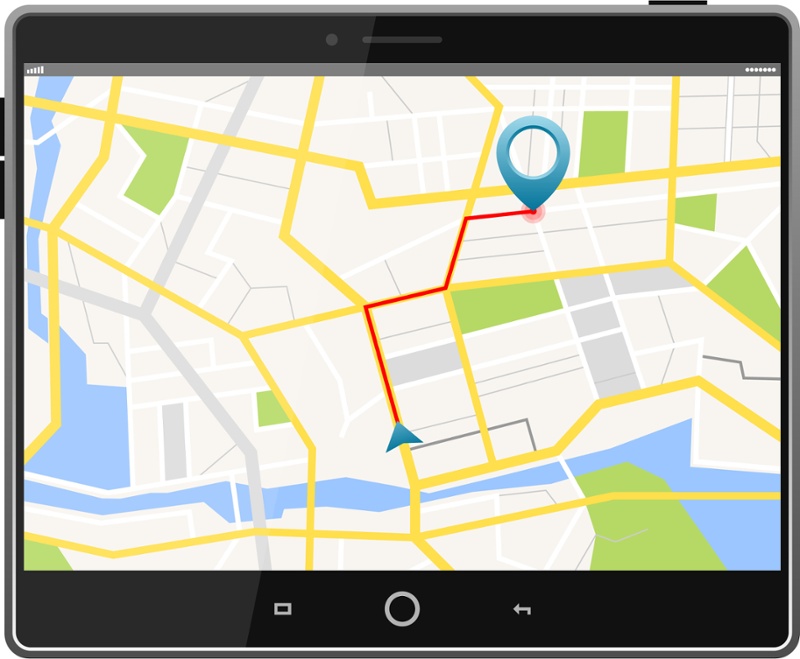
Sustainability is no longer just a buzzword; it’s an imperative. Businesses across sectors are waking up to the importance of adopting eco-friendly practices, not just for the health of the planet but also for their bottom line. There’s an established game-changer for service-driven industries: field service software. This powerful tool is a cornerstone in significantly reducing waste.
The Ecological Impact of Traditional Field Services
Traditional field services have been the backbone of various industries for decades. Whether it’s machinery maintenance, home services, or telecommunications installations, field services ensure that processes and systems throughout the world run smoothly. And as the world becomes increasingly aware of environmental issues, so are field service operations making strides to implement more sustainable business practices.
1. Excess Travel and Fuel Consumption
One of the most significant concerns with traditional field services is the amount of travel involved. Before the age of digitalization and optimization tools, technicians and field workers would often be dispatched without a clear, efficient route. This means more time on the road, leading to increased fuel consumption. The ramifications of this are two-fold: a higher carbon footprint due to greenhouse gas emissions and increased expenses for businesses.

2. The Paperwork Problem
While the digital era is well upon us, many traditional field service operations continue to rely heavily on paperwork. Work orders, service logs, and invoices often exist in paper form. This not only leads to the consumption of vast amounts of paper, but also creates inefficiencies in terms of data retrieval and storage.
3. Inefficient Equipment and its Consequences
Older equipment or machinery that hasn’t been upgraded or maintained can be highly inefficient. Not only do they consume more power, but they often require more frequent servicing and higher fuel consumption. Older, inefficient equipment usually release pollutants or waste materials at a higher rate that can be detrimental.
4. Resource Redundancy
Without better scheduling and route optimization, there can be situations where multiple technicians are dispatched for tasks that could have been addressed by a single visit. This results in redundant trips (a waste of resources). The environmental impact of such redundancies might seem trivial on a single instance but is more significant as it accumulates over time.
5. Waste Management Issues
Traditional field services often involve the replacement of parts or equipment. These discarded items usually need specialized disposal to minimize environmental degradation. Some of these components, especially in electronics, can be toxic and lead to soil and water pollution if not disposed of correctly.
Traditional field services have been pivotal in supporting industries and economies and they’re adjustments to ecological impacts are happening everyday. It’s imperative for businesses and industries to re-evaluate and adapt their operations. They need to modernize and embrace new technology and sustainable practices can pave the way for a balance between operational efficiency and environmental responsibility.
Minimizing Travel with Route Optimization
When every second counts, businesses are continually looking for ways to boost efficiency and increase return on investment. One solution that has gained prominence is route optimization.

Understanding Route Optimization
At its core, route optimization is the process of determining the most cost-effective and time-efficient path between multiple destinations. Leveraging algorithms and real-time data, this method can considers various factors such as traffic conditions, distance between points, vehicle capabilities, and time constraints to plot the optimal route for a journey. This means that instead of relying on intuition or outdated static maps, drivers are equipped with dynamic routing that adjusts according to real-world conditions.
Environmental and Economic Benefits
- Reduced Fuel Consumption: By minimizing detours, stops, and backtracking, optimized routes lead to shorter driving distances. This directly translates into less fuel being consumed, which is not only beneficial for the environment but also reduces operational costs for businesses.
- Lesser Emissions: A decrease in drive time means vehicles release fewer emissions.
- Cost Savings: The monetary benefits of route optimization are manifold. Beyond fuel savings, there’s a reduction in wear and tear on vehicles, decreased overtime costs for drivers, and improved productivity as more tasks can be completed in less time.
Real-world Impacts of Route Optimization
- Case Study – A Delivery Company: A mid-sized delivery company in the Midwest decided to implement route optimization software. Within a few months, they reported a 20% reduction in fuel costs and a 15% increase in daily deliveries. The reduced drive times also meant less stress for drivers, leading to improved worker satisfaction and retention rates.
- Municipal Waste Collection: A city in Europe re-evaluated its waste collection routes using optimization software. The results were staggering. The city was able to reduce its fleet by five trucks, resulting in significant cost savings in terms of vehicle maintenance and fuel.
The Bigger Picture
While route optimization offers direct benefits in terms of cost savings and environmental impact, its ripple effect is profound. Efficient routes mean timely deliveries (and more deliveries), leading to increased customer satisfaction. Fewer vehicles on the road also reduce traffic congestion, and as businesses share their success stories, it creates a domino effect, encouraging others to embrace this technology.
Going Paperless: The Environmental and Efficiency Perks
The evolution of the modern workplace has seen a significant shift from tangible, paper-based operations to digital environments. Going paperless is not just a trendy catchphrase; it’s a transformative approach that offers environmental and efficiency gains.
The Environmental Price of Paper
Paper, despite its ubiquity, comes with an environmental toll. The primary raw material for paper production is trees. Large-scale logging to feed paper mills leads to deforestation, a major contributor to habitat destruction, biodiversity loss, and climate change. The paper production process is water-intensive. It’s estimated that producing a single sheet of paper requires 1 1/2 gallons of water. Moreover, the energy required for this process, from logging to manufacturing and transportation, is considerable. And paper waste occupies significant landfill space. Even when recycled, the process consumes additional energy and water. Moreover, ink and dyes can leach into the environment and while the majority of inks and dyes are biodegradable, some are not.
Going Digital with Field Service Software
- Digital Work Orders: Rather than printing work orders or service requests, technicians can access them electronically. Real-time updates mean that any changes can be communicated instantly, without the need for reprinting.
- Electronic Signatures and Approvals: Tasks that traditionally required physical signatures, from approvals to confirmations, can now be executed digitally. This not only saves paper but also streamlines the process.
- Cloud-based Documentation: Storing manuals, guides, and service histories in the cloud eliminates the necessity for physical copies. Technicians can access a wealth of information at their fingertips, ensuring they are well-equipped to handle tasks efficiently.
Additional Advantages of a Paperless Approach
- Efficiency and Speed: Digital operations are inherently faster. Searching for information, sharing updates, or processing requests takes mere seconds, improving overall productivity.
- Accuracy and Data Integrity: Digital data is less prone to errors compared to manual entry. Plus, backup and recovery systems ensure data integrity.
- Cost Savings: From purchasing paper and ink to storage costs and disposal, paper incurs expenses. Going paperless translates to tangible savings over time.
- Enhanced Security: Digital documents, with appropriate security measures, are less vulnerable to loss, theft, or damage compared to their physical counterparts.
In essence, the move towards a paperless environment, facilitated by tools like field service software, represents a win-win situation. Organizations can enjoy streamlined operations, cost savings, and improved data management, all while making a positive contribution to the environment.
Equipment Efficiency and the Environment
Attention has inevitably turned towards the equipment that powers industries, homes, and infrastructures. The efficiency of this equipment, or lack thereof, can have pronounced effects on an organization’s bottom line.

The Ecological Toll of Inefficient Equipment
Inefficient equipment, whether it’s an industrial machine, a household appliance, or an HVAC system, brings with it several challenges:
- Increased Energy Consumption: Inefficient devices often require more power to operate than their efficient counterparts. This excess energy often comes from non-renewable sources, contributing to environmental degradation and resource depletion.
- Higher Emissions: As a direct result of increased energy consumption, there’s a rise in greenhouse gas emissions, particularly if the energy source is fossil fuels. This exacerbates global warming and its associated consequences.
- Waste Generation: Inefficient equipment tends to break down more frequently, leading to more waste in terms of discarded parts. If not disposed of correctly, these can result in environmental contamination.
Role of Field Service Software in Enhancing Equipment Efficiency
- Real-time Monitoring: Field service software can monitor equipment performance in real-time. This allows for immediate identification of inefficiencies or malfunctions.
- Predictive Maintenance: Even if real-time monitoring is not available, software can schedule (and even predict) when equipment might fail or require servicing. This proactive approach ensures that equipment runs at peak efficiency, thus conserving energy.
- Optimized Repair Schedules: By analyzing equipment performance data, the software can schedule ad-hoc maintenance or repairs during off-peak hours, minimizing disruptions and ensuring that equipment is serviced promptly, preventing prolonged inefficiency.
Towards a Reduced Carbon Footprint
Harnessing the power of field service software for equipment management can have a substantial positive environmental impact:
- Lower Energy Consumption: Efficiently running equipment uses less energy, reducing the demand on power grids and lowering greenhouse gas emissions.
- Decreased Waste: Timely maintenance and repairs mean fewer parts end up in landfills. Additionally, extending the lifespan of equipment reduces the need for manufacturing new units, which in turn conserves resources.
- Economic Savings: Beyond the environmental benefits, efficient equipment translates to monetary savings for businesses and consumers, thanks to reduced energy bills and maintenance costs.
By leveraging technologies like FieldConnect, we not only ensure the optimal performance of our equipment but also take significant strides towards the green bottom line. In this endeavor, every kilowatt saved and every emission reduced counts.
Making Your Field Service Operations More Sustainable While Increasing Revenue
Transitioning towards more eco-friendly practices – like incorporating field service software – can seem like a daunting task for many businesses. But with the right strategy, the switch can be smooth, effective, and beneficial in the long run. Here’s a guide to making the shift, emphasizing the practical steps to seamlessly integrate field service software.
1. Evaluating the Business Need
Before diving into any significant change, businesses should conduct a thorough assessment to understand their unique needs.
- Scope of Implementation: Determine the scale at which the software will be used. Is it going to be department-specific or enterprise-wide?
- Operational Challenges: Identify existing bottlenecks and inefficiencies that the software can address. This helps in setting clear objectives for the implementation.
2. Choosing the Right Software
With a multitude of options in the market, it’s crucial to select software that aligns with the business’s goals.
- Features and Customization: Ensure the software offers the required features and allows for customization to cater to specific needs.
- Integration Capabilities: The software should easily integrate with other existing systems to ensure a seamless flow of information.
- Eco-friendly Attributes: Prioritize software options that emphasize an energy-efficient operation or features that promote minimal resource usage.
3. Training the Team
A new software’s effectiveness is only as good as its users. Investing time in staff training is paramount.
- Interactive Workshops: Organize hands-on training sessions where employees can explore the software’s features.
- Ongoing Support: Have experts or dedicated personnel to address queries and offer assistance as staff get accustomed to the system.
- Feedback Loops: Encourage employees to provide feedback on the software’s usability. This can be valuable for refining training processes or even for providing feedback to the software provider.
4. Gradual Roll-out
Instead of a complete immediate overhaul, consider a phased implementation approach.
- Pilot Testing: Start by deploying the software in one department or for a specific set of tasks. This allows for real-time assessment and adjustment.
- Iterative Expansion: Based on the success and learnings from the pilot phase, expand the software’s usage across other areas.
Your own success hinges on meticulous planning, stakeholder engagement, and a continuous commitment to ROI and sustainability. By leveraging these tips, businesses can ensure that their transition to using field service software is not just smooth but also maximally beneficial for both the environment and their operational efficiency.
Embracing a Sustainable Future: The Power of Field Service Software
It becomes evident that the transition to such software is not just a technological upgrade; it’s a commitment to a sustainable future. The software’s ability to optimize routes, digitize operations, ensure equipment efficiency, and facilitate greener practices presents businesses with a golden opportunity. By implementing it, they are not only enhancing their operational proficiency (thus increasing ROI) but also significantly reducing their carbon footprint.
But as with any transformative journey, such a move requires thoughtful planning, informed decisions, and a genuine commitment to change. It’s not just about using software; it’s about leveraging its full potential. Businesses that take the leap, equipped with the right tools and strategies, will not only thrive in their respective markets but will also be recognized as torchbearers of a movement towards a more sustainable world.